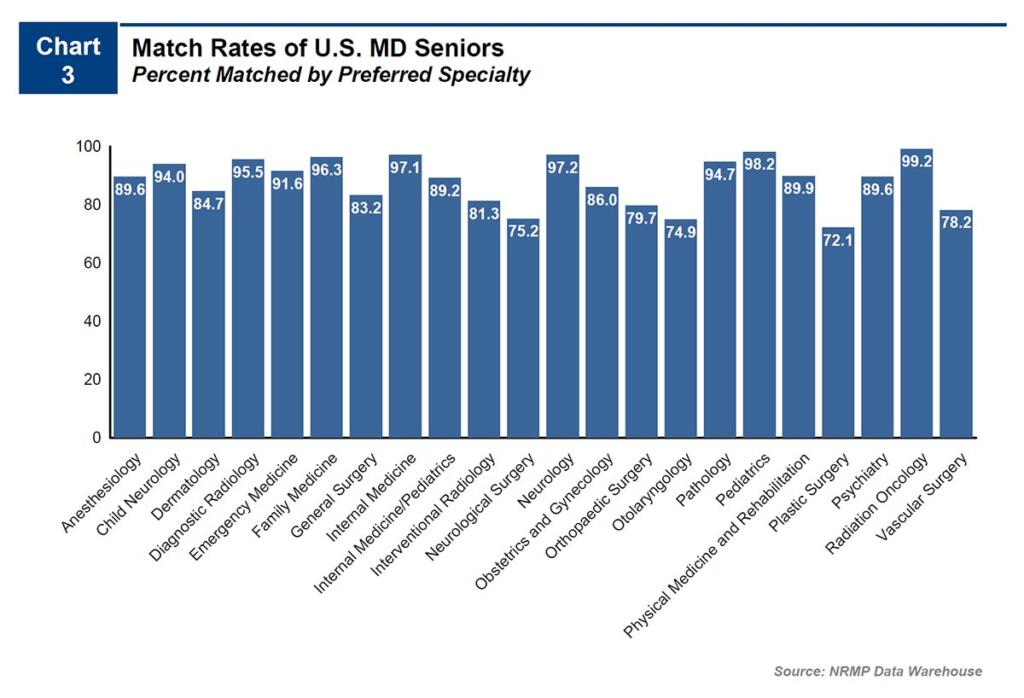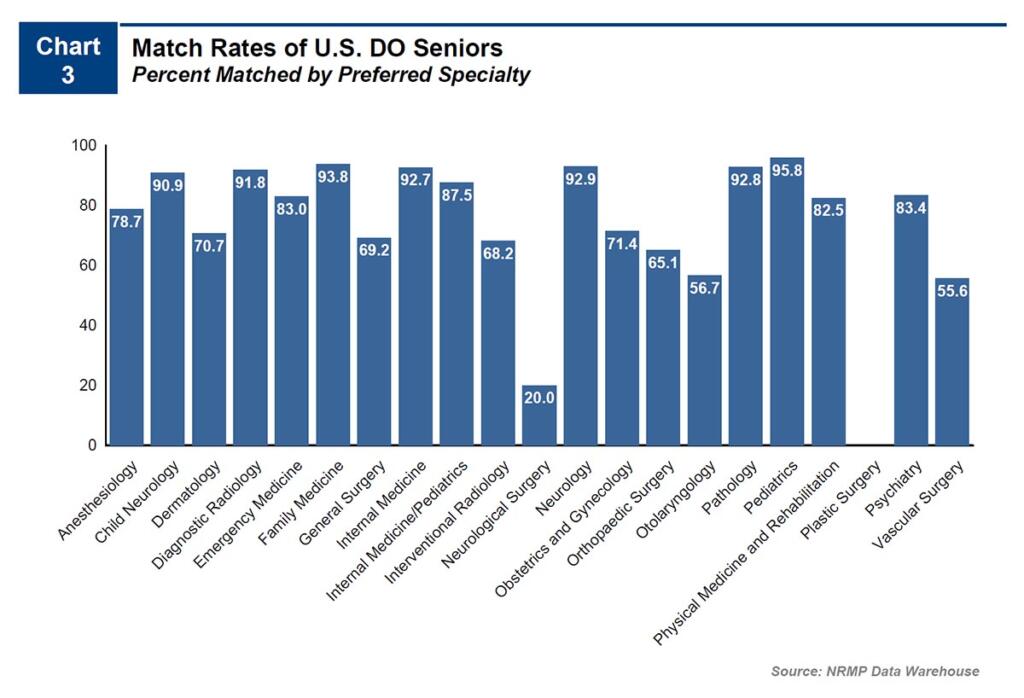The information on this website should not be considered medical advice.
This website contains affiliate links, and we may be compensated for referrals.
What’s the Difference Between MD and DO?
In many ways, MDs and DOs are basically the same. In both cases, premed students need to take similar prereqs and score well on the MCAT. They’ll spend four years in med school, followed by three to seven years of residency (depending on the specialty).
In osteopathic medical school, in addition to the regular medical curriculum, DO students also spend about 200 hours learning a technique called osteopathic manipulative treatment, or OMT. This is a form of hands-on treatment that emphasizes alignment of the musculoskeletal system. DOs may incorporate this type of treatment into their patient care, while MDs don’t perform OMT.
Osteopathic med schools also tend to emphasize a more holistic approach in their training, often described as a “mind-body-spirit” approach. By contrast, allopathic med schools tend to use a more rigorous, science-based approach. This certainly isn’t to say that an allopathic physician can’t practice holistic, patient-centered medicine, or that an osteopathic physician can’t practice evidence-based medicine. There’s just somewhat of a difference in the approach that each type of school takes to educating physicians.
That being said, the curriculum in each type of school is actually very similar. This is why a degree from either type makes a person eligible to get a license to practice medicine. Other than whether or not you learn OMT, what you learn will be pretty much the same in either an osteopathic or an allopathic med school.
Applying to Med School
Getting into med school isn’t easy, no matter which type of school you choose. However, getting into an allopathic school may be a little more difficult. Data from the AAMC show that the mean total MCAT score for those matriculating into allopathic med schools was 511.9, and the mean total GPA was 3.74. By contrast, the AACOM reports that for those entering osteopathic med schools, the mean MCAT was 504.3, and the mean GPA was 3.54.
That being said, the overall acceptance rate to allopathic schools and osteopathic schools was roughly the same – about 36%. There are far more applicants to allopathic schools, and the data on MCAT scores and GPAs show that the applicant pool is a bit more competitive for these schools, although the difference isn’t enormous. Overall, the data show that it may be a little easier to get into an osteopathic school, but it’s certainly still a challenge.
Licensure
In order to achieve full licensure, both specialties have to pass a medical licensing exam. MDs need to pass the USMLE (United States Medical Licensing Examination), while DOs must pass the COMLEX (Comprehensive Osteopathic Medical Licensing Examination).
The two exams are very similar – both include three levels (or steps), with the second of these being split into two parts.
Overall, the passing rates are a bit higher on the USMLE than on COMLEX.
Overall pass rates for US med students (or graduates) for Step 3:
| USMLE | COMLEX |
|---|---|
| Step 1: 97% | Level 1: 91.6% |
| Step 2 CK: 98% | Level 2 CE: 95.3% |
| Step 2 CS: 95% | Level 2 PE: 91.7% |
| Step 3: 97% | Level 3: 96.6% |
As you can see, the numbers are a little bit lower for passing the COMLEX than the USMLE at every level. The difference isn’t huge, but it’s consistent.
At the same time, these are two different exams. While they’re designed to be equivalent, they aren’t exactly the same. Maybe one exam is harder than the other. Is there a way to compare the performance of MD and DO students more directly?
It turns out that there is. While DOs don’t have to take the USMLE, some of them choose to.(This can be an advantage in applying for certain residency programs – residency directors like to have USMLE scores to be able to assess applicants’ performance and compare them directly to each other.)
This gives us a way to compare the performance of MD and DO students on the same exam.
Here’s what the data show:
As you can see, there’s a similar trend evident here. MDs do have an advantage over DOs when it comes to passing the medical licensing exam, although the difference isn’t huge.
| MDs | DOs | |
|---|---|---|
| Step 1: | 97% | 95% |
| Step 2 CK: | 98% | 97% |
| Step CS: | 95% | 87% |
| Step 3: | 97% | 91% |
Specialty Choices
Because of the holistic focus of osteopathic medical training, DOs have a tendency to prefer fields like primary care that emphasize this aspect of medicine. However, a DO isn’t limited to these fields; they can choose to pursue any specialty that they want, including surgery or a surgical subspecialty. And of course, an MD can certainly choose to pursue primary care if they so choose.
In fact, primary care specialties are by far the most commonly chosen fields, for both MDs and DOs.
Top 5 specialties that MD/DO seniors matched into in 2021:
MD Seniors
- Internal Medicine
- Emergency Medicine
- Pediatrics
- Family Medicine
- Psychiatry
DO Seniors
- Internal Medicine
- Family Medicine
- Emergency Medicine
- Pediatrics
- Psychiatry
The order differs a little, but overall, they’re basically the same list. This probably reflects the much larger number of positions available in these specialties, as compared with others. Of course, not all the residents from these programs will end up in primary care – some will go on to do a fellowship in a medical subspecialty. But we do see that most med students, regardless of which type of school they attended, end up in similar specialties.
Matching
Until recently, there were separate residency programs for allopathic and osteopathic physicians, with two separate matches. However, in 2020, the two matches were fully fused together into one. DO and MD students can now apply for the exact same residency programs, using the same application process. This allows us to easily compare outcomes for students with the two degrees.
In 2021, 89.1% of DO students successfully matched to a residency. The number is slightly higher for MD students, 92.8% of whom successfully matched. While there is a difference in overall match rates, it’s a very small one.
However, what about for students who are applying for highly competitive residencies? Is there a difference in match rates? To answer that question, let’s take a more detailed look at the outcomes from the most recent match for which we have data (2020). These two charts show the match rates for MD and DO students who chose various specialties.
In every specialty, match rates are higher for MDs than for DOs. However, for primary care specialties, the difference is negligible. For example, in Family Medicine, 96.3% of MDs and 93.8% of DOs matched. Much like in other areas, having an MD may be a slight advantage, but not an enormous one.
However, there are some specialties in which an MD is a more significant advantage. These are primarily surgical specialties. In Plastic Surgery, none of the DO students who chose the specialty matched successfully. In Neurosurgery, only 20% of DOs matched, while 75.2% of MDs did. If you look at other surgical subspecialties, the results are fairly similar. General Surgery also shows a clear difference, although it’s a little smaller. The same is true for some of the more competitive medical specialties, like Dermatology. When applying for a more competitive residency program, having an MD seems to give you a significant edge.
Percentage of Physicians in Practice
The majority of doctors currently practicing in the US are MDs. Data from the American Association of Medical Colleges (AAMC) show that only 7.8% of currently practicing physicians are DOs. Perhaps because of this, the MD tends to be a more widely recognized degree. When people see the letters MD after your name, almost everyone will know exactly what that means. By contrast, if you’re a DO, you might have to explain it to some people. This isn’t necessarily a huge issue for everyone, but some people do prefer the more widely recognized credential.
That being said, the number of DOs is currently increasing. Data from the American Osteopathic Association show an 80% increase in the number of osteopathic physicians in the US over the past decade, and 26% of current medical students are attending osteopathic schools. As the number of DOs increases, it’s likely that the DO credential will become more widely recognized in the future.
Can a DO Practice Outside of the U.S.?
If you’re planning to stay in the US for your entire career, then you can be fully licensed either as an MD or as a DO. However, the situation is different in other countries. Nearly all countries recognize the MD degree, so if you wanted to move abroad, your degree would still be valid pretty much anywhere. (Some countries also accept US residencies and licensure, while others would require you to pass their licensing exam and maybe even repeat part or all of your residency.)
The situation is different for DOs. There are some countries that recognize the DO degree as a valid medical degree, but others don’t. The American Osteopathic Association has a map (below) that shows which countries have accepted the DO degree for licensure, and which have not. Although osteopathic organizations are working towards increased recognition of the DO credential, it remains much less widely recognized than the MD. If you’re considering moving abroad at some point in the future, then an allopathic med school is probably a better choice.
Is there an MD vs DO Salary Gap?
It’s not uncommon for people to think that MDs earn more than DOs. On average, they’re right but not for the reasons that you might think. A physician salary tends to be determined by several factors including, but not limited to, education, specialization, and location. DOs more often gravitate towards lower paying specialties, including pediatrics and primary care. They also have a larger presence in more rural areas, which tend to have lower compensation rates. That being said, the salary for an anesthesiologist tends to be the same regardless of whether they are a DO or an MD, provided all other factors are the same.
Read: The Highest & Lowest Paying Specialties for Doctors.
Active Physicians by Degree and Specialty
The table and figure show the number and percentage of active physicians with a DO or MD degree for each of the 47 specialty categories featured in the 2020 Physician Specialty Data Report. Does not include International Medical Graduates.Source: American Medical Association. AMA Physician Masterfile (December 2019).
Note: Excludes 14 active physicians whose degree type is unknown.
| Specialty | Total Active Physicians | Active DOs | Active U.S. MDs | Percent DOs | Percent MDs |
|---|---|---|---|---|---|
| All Specialties | 938,966 | 77,265 | 620,520 | 8.2% | 66.1% |
| Allergy and Immunology | 4,900 | 174 | 3,567 | 3.6% | 72.8% |
| Anatomic/Clinical Pathology | 12,643 | 328 | 8,319 | 2.6% | 65.8% |
| Anesthesiology | 42,267 | 2,896 | 30,328 | 6.9% | 71.8% |
| Cardiovascular Disease | 22,521 | 896 | 14,415 | 4.0% | 64.0% |
| Child and Adolescent Psychiatry | 9,787 | 560 | 6,148 | 5.7% | 62.8% |
| Critical Care Medicine | 13,093 | 709 | 6,902 | 5.4% | 52.7% |
| Dermatology | 12,516 | 735 | 11,084 | 5.9% | 88.6% |
| Emergency Medicine | 45,202 | 5,255 | 36,664 | 11.6% | 81.1% |
| Endocrinology, Diabetes, and Metabolism | 7,994 | 235 | 4,400 | 2.9% | 55.0% |
| Family Medicine/General Practice | 118,198 | 19,230 | 68,997 | 16.3% | 58.4% |
| Gastroenterology | 15,469 | 633 | 10,223 | 4.1% | 66.1% |
| General Surgery | 25,563 | 1,166 | 19,273 | 4.6% | 75.4% |
| Geriatric Medicine | 5,974 | 331 | 2,553 | 5.5% | 42.7% |
| Hematology and Oncology | 16,274 | 489 | 9,593 | 3.0% | 58.9% |
| Infectious Disease | 9,687 | 337 | 5,886 | 3.5% | 60.8% |
| Internal Medicine | 120,169 | 6,869 | 65,002 | 5.7% | 54.1% |
| Internal Medicine/Pediatrics | 5,509 | 299 | 4,624 | 5.4% | 83.9% |
| Interventional Cardiology | 4,407 | 181 | 2,183 | 4.1% | 49.5% |
| Neonatal-Perinatal Medicine | 5,919 | 255 | 3,395 | 4.3% | 57.4% |
| Nephrology | 11,407 | 500 | 5,059 | 4.4% | 44.3% |
| Neurological Surgery | 5,748 | 112 | 4,792 | 1.9% | 83.4% |
| Neurology | 14,146 | 740 | 8,782 | 5.2% | 62.1% |
| Neuroradiology | 4,089 | 175 | 3,284 | 4.3% | 80.3% |
| Obstetrics and Gynecology | 42,720 | 2,991 | 33,487 | 7.0% | 78.4% |
| Ophthalmology | 19,312 | 475 | 17,279 | 2.5% | 89.5% |
| Orthopedic Surgery | 19,069 | 1,069 | 16,768 | 5.6% | 87.9% |
| Otolaryngology | 9,777 | 391 | 8,664 | 4.0% | 88.6% |
| Pain Medicine and Pain Management | 5,871 | 577 | 3,704 | 9.8% | 63.1% |
| Pediatric Anesthesiology (Anesthesiology) | 2,571 | 159 | 1,942 | 6.2% | 75.5% |
| Pediatric Cardiology | 2,966 | 70 | 2,074 | 2.4% | 69.9% |
| Pediatric Critical Care Medicine | 2,639 | 125 | 1,768 | 4.7% | 67.0% |
| Pediatric Hematology/Oncology | 3,079 | 104 | 2,174 | 3.4% | 70.6% |
| Pediatrics | 60,618 | 2,903 | 42,473 | 4.8% | 70.1% |
| Physical Medicine and Rehabilitation | 9,767 | 1,402 | 6,094 | 14.4% | 62.4% |
| Plastic Surgery | 7,317 | 121 | 6,307 | 1.7% | 86.2% |
| Preventive Medicine | 6,675 | 579 | 5,124 | 8.7% | 76.8% |
| Psychiatry | 38,792 | 1,818 | 24,883 | 4.7% | 64.1% |
| Pulmonary Disease | 5,106 | 200 | 3,286 | 3.9% | 64.4% |
| Radiation Oncology | 5,306 | 92 | 4,585 | 1.7% | 86.4% |
| Radiology and Diagnostic Radiology | 28,025 | 1,105 | 23,541 | 3.9% | 84.0% |
| Rheumatology | 6,265 | 342 | 3,687 | 5.5% | 58.9% |
| Sports Medicine | 2,897 | 548 | 1,866 | 18.9% | 64.4% |
| Sports Medicine (Orthopedic Surgery) | 2,903 | 190 | 2,563 | 6.5% | 88.3% |
| Thoracic Surgery | 4,479 | 103 | 3,400 | 2.3% | 75.9% |
| Urology | 10,201 | 260 | 8,727 | 2.5% | 85.6% |
| Vascular and Interventional Radiology | 3,877 | 136 | 3,197 | 3.5% | 82.5% |
| Vascular Surgery | 3,943 | 161 | 3,050 | 4.1% | 77.4% |
How to Choose Between MD and DO
In general, if you’re planning to choose primary care as your specialty, then it probably won’t make a huge difference whether you choose an allopathic or osteopathic medical school. However, if you’re thinking of applying to a highly competitive residency (such as a surgical subspecialty), then you might want to focus on schools that offer an MD, as it offers a significant advantage in those fields.
If you don’t have a strong preference about becoming an MD versus a DO, there’s no reason why you can’t apply to both types of schools in the same application cycle. The two types of schools do use different application systems – allopathic schools use AMCAS, while osteopathic schools use AACOM. However, the information in them is mostly the same, so it wouldn’t be too hard to copy and paste most of it from one to the other. One difference to note is that the personal statement limit in AACOM is slightly shorter (4500 character limit, vs 5300 for AMCAS), so if you’ve written your personal statement with AMCAS in mind, you’ll probably have to edit it down a bit to fit into the AACOM limit.
Given that it’s highly competitive to get into any type of med school, some students don’t really care which type of school they go to – they just want to get in. While some students do select just one type of program to apply to, others choose to apply to both types of schools. If they get into more than one, they can then choose whichever school seems to be the best fit for them.
Whether you receive an MD or a DO degree at the end of medical school, you’ll still be a doctor. You’ll be eligible to get the same medical license and to practice in any specialty that you choose. While there are some differences between the two types of schools, they’re ultimately very similar.
Dr. Patricia Shelton, MD, holds a Doctor of Medicine degree and a Bachelor’s degree in Neuroscience, both from the University of Washington in Seattle. For the past eight years, her career has been focused on medical communications, including writing both for the general public as well as for other medical professionals. In addition to this, she also teaches anatomy and physiology at the college level for the National Institutes of Health, as well as at the general public level in yoga teacher training programs. Her book, The Yoga Doctor, was published in 2015.








Facebook Comments